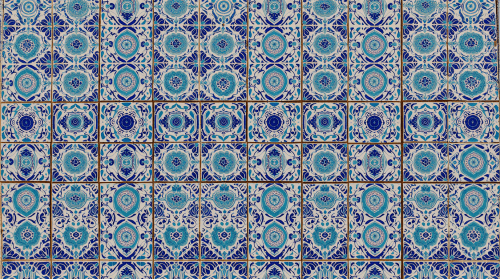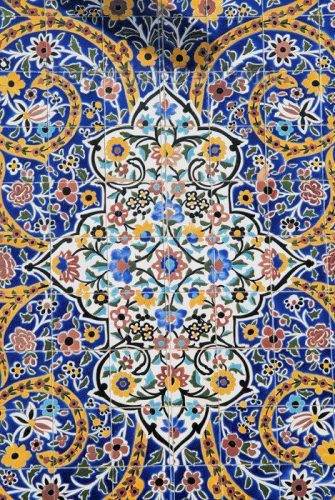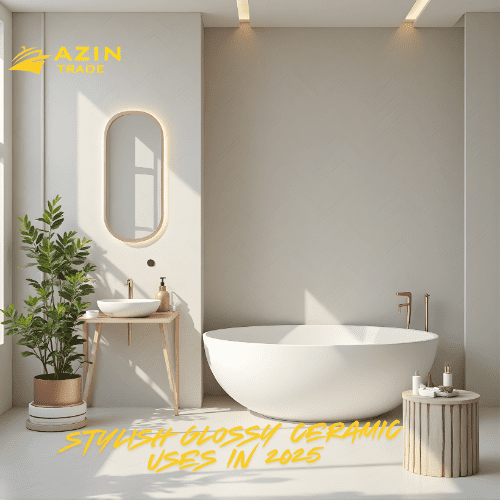Complete Buyer’s Guide to Iranian Ceramic Tiles
thousands of designs, and endless technical specs can make the buying process confusing — especially if you want the perfect combination of design, durability, performance, and price. Among all international options, Iranian ceramic tiles stand out due to their distinct artistic heritage, strong industrial base, and exceptional value for money. From traditional Persian tilework to highly engineered modern porcelain slabs, Iranian ceramics offer a versatile and reliable choice for residential, commercial, and architectural projects.
This extended and SEO-optimized buyer’s guide provides everything you need to know before buying Iranian ceramic tiles. We cover heritage, design, technical specifications, applications, supplier selection, logistics, sustainability, trends, and troubleshooting. By the end, you’ll have expert-level knowledge to confidently choose the best Iranian ceramic tile for your project — whether you are a homeowner, contractor, designer, importer, or large-scale developer
Why Choose Iranian Ceramic Tiles?
Key Advantages That Make Persian Ceramics a Smart Investment
1. Deep Heritage and Authentic Design Identity
Iran is one of the world’s oldest centers of ceramic and tile production. Techniques such as haft-rang (seven-color tilework), mosaic faience, and classical Persian ornamentation have shaped global art history for centuries.
When you choose Iranian ceramic tiles, you are not only selecting a durable construction material — you are bringing cultural richness into your space.
Design Benefits of Iranian Tiles
-
Distinctive geometric and floral motifs
-
Advanced digital printing for marble-look, stone-look, wood-look and concrete-look tiles
-
Warm, sophisticated color palettes
-
High-quality glazes with depth and clarity
-
Decorative feature tiles inspired by Persian architecture
From minimalist large-format porcelain slabs to traditional Persian patterns, Iranian ceramics offer unmatched artistic diversity.

2. Strong Raw Material Base and Modern Production Capacity
Iran naturally possesses abundant reserves of:
-
Kaolin
-
Feldspar
-
Silica
-
High-quality clays
These materials form the backbone of ceramic and porcelain tile production.
In addition, Iran has invested heavily in modern tile manufacturing technologies — including:
-
Digital inkjet printing systems
-
High-pressure pressing technology
-
Advanced roller kilns
-
Rectification machines
-
Polished and semi-polished finishing systems
With an annual production capacity reaching hundreds of millions of square meters, the Iranian ceramic tile industry supports stable supply, competitive pricing and export-grade product lines.
3. Global Export Reach and International Availability
Iranian tiles are exported to Asia, Europe, Africa and the Middle East, supported by:
-
Large-scale manufacturers
-
International trading companies
-
Specialized exporters
-
Regional distributors
For international buyers, this means:
-
Reliable shipping options
-
Competitive FOB and CIF pricing
-
Consistent access to premium lines
-
Professional packing for long-distance transport
Whether you are sourcing tiles for a home renovation or a 5-star hotel project, Iranian ceramic tiles are globally accessible.
4. Excellent Value for Money
One of the strongest advantages of Iranian tiles is their price-to-performance ratio.
Because Iran has:
-
Local raw materials
-
Mature ceramic infrastructure
-
Lower production costs
-
High-volume factories
… the final product often delivers quality comparable to Italian and Spanish tiles — but at a more favorable price point.
If you are looking for premium aesthetics without paying premium-European prices, Iranian ceramics are an exceptional choice.
Key Factors to Consider When Buying Iranian Ceramic Tiles
To find the best product for your project, evaluate each tile across these major criteria.
1. Product Type and Application
Wall vs Floor Tiles
-
Wall tiles are thinner, lighter and not designed for heavy impact.
-
Floor tiles offer greater density, hardness and slip resistance.
Indoor vs Outdoor Tiles
Outdoor tiles must provide:
-
Low water absorption
-
Anti-slip properties
-
Frost resistance
-
UV-stable colors
Porcelain vs Ceramic Tiles
-
Porcelain tiles (porcelain stoneware) have <0.5% water absorption, making them ideal for floors, outdoor spaces and high-traffic areas.
-
Ceramic tiles are perfect for walls, decorative uses and low-humidity spaces.
Formats and Sizes
Iranian factories produce:
-
30×60 cm
-
60×60 cm
-
60×120 cm
-
80×160 cm
-
100×300 cm slabs (depending on the manufacturer)
-
Mosaics and decorative inserts
Larger tiles create a more continuous and modern look.
Finishes
-
Matte
-
Glossy
-
Satin
-
Textured / anti-slip
-
Polished / semi-polished
-
Structured 3D surfaces
The ideal finish depends on your design and safety requirements.
2. Technical Specifications: What to Check Before Buying
To ensure long-term performance, compare each tile based on:
-
Water Absorption (%)
Lower absorption = higher density and durability. -
Breaking Strength
Indicates load-bearing performance. -
Surface Hardness (Mohs scale)
Harder surfaces resist scratches and wear. -
Slip Resistance (R-rating)
Essential for wet areas such as bathrooms, pools, kitchens or outdoor patios. -
Rectification
Rectified tiles allow tighter grout joints and a cleaner look. -
Dimensional Accuracy
Thickness, squareness and flatness must meet standards. -
Shade Variation and Batch Control
Always verify batch number to avoid colour mismatch.
3. Quality, Certification and Brand Reliability
High-quality Iranian tile manufacturers generally comply with:
-
ISO standards
-
CE requirements
-
Global export norms
Always evaluate:
-
Brand reputation
-
Factory photos or videos
-
Previous export records
-
Customer reviews
-
Sample quality
Visual inspection should confirm:
-
No cracks or chips
-
Smooth, consistent glaze
-
Uniform texture
-
Straight edges
-
No warping or bending
4. Aesthetic, Texture and Design Matching
Since Iranian tiles excel in design versatility, consider:
-
Colour harmonization with interior lighting
-
Grain, veining or pattern direction
-
Compatibility with furniture, cabinetry and flooring
-
Decorative options such as feature walls and accent strips
-
Texture comfort (especially in homes where people walk barefoot)
The right aesthetic choice can elevate the entire environment.

5. Logistics, Pricing and Supply Considerations
Before finalizing, evaluate:
-
Stock availability
-
Lead times
-
Palletizing and packaging quality
-
Export/shipping terms (FOB, CIF, EXW)
-
Freight and customs duties
-
Minimum order quantities
-
Warranty and return policy
-
Installation costs
-
Waste margin (typically 5–10%)
International buyers should especially allow buffer time for customs clearance.
6. Sustainability and Environmental Factors
Modern Iranian tile factories increasingly focus on:
-
Energy-efficient kilns
-
Improved recycling processes
-
Water recycling systems
-
Locally sourced natural materials
-
Lower-VOC glazes
A durable tile is inherently eco-friendly since it reduces long-term replacement waste.
Extended Step-by-Step Guide: How to Choose the Best Iranian Ceramic Tile
This buyer’s roadmap ensures a smooth and successful selection process.
Step 1: Define Your Project Requirements in Detail
Identify:
-
Room function and traffic level
-
Surface type (wall/floor)
-
Environmental exposure
-
Style direction (modern, classic, Persian, industrial, luxury)
-
Preferred sizes and finishes
-
Budget
-
Installation complexity
Step 2: Shortlist Trusted Iranian Manufacturers
Use:
-
Verified manufacturer lists
-
Export catalogs
-
Reputable distributors
-
Online directories
-
Architectural references
Request:
-
Technical sheets
-
Photos of installed projects
-
Full product catalog
-
Porcelain vs ceramic comparisons
Step 3: Request Samples and Evaluate in Depth
When samples arrive:
-
Inspect them in natural and artificial light
-
Check surface flatness
-
Test water absorption
-
Evaluate edge precision
-
Compare printed pattern resolution
-
Assess tactile comfort and slip resistance
Take your time — samples are the most reliable indicator of real quality.
Step 4: Compare Specifications and Total Cost
Look at:
-
Absorption
-
Slip rating
-
Hardness
-
Strength
-
Dimensions
-
Surface quality
Then compare total landed cost, including:
-
Tile cost
-
Shipping
-
Customs
-
Local taxes
-
Installation labor
A tile that seems cheaper may end up costing more once logistics are added.
Step 5: Finalize the Order and Confirm Details
Before paying:
-
Re-confirm batch number
-
Calculate full quantity + waste margin
-
Ensure packaging standard is export-grade
-
Confirm delivery timeline
-
Review terms and conditions
-
Get installation instructions in writing
Step 6: Install Professionally and Follow Proper After-Care
Professional installers ensure:
-
Perfect leveling
-
Correct adhesive selection
-
Proper grout width
-
Accurate layout planning
-
Seamless finishing
For after-care:
-
Use pH-neutral detergents
-
Avoid acidic cleaners
-
Maintain proper drainage outdoors
-
Keep spare tiles from the same batch
Common Challenges When Buying Iranian Ceramic (and How to Prevent Them)
1. Shade Variation
Solution: Always order from the same batch and keep extra stock.
2. Shipping Delays
Solution: Work with experienced exporters and reliable freight companies.
3. Incorrect Specs or Miscommunication
Solution: Request written technical data and verify through samples.
4. Limited Spare Tile Availability
Solution: Order 5–10% extra and store it safely.
5. Inconsistent Quality Among Small Producers
Solution: Choose well-known Iranian manufacturers with established reputations.
Extended Checklist for the Best Iranian Ceramic Tile
Use this for easy evaluation:
-
Correct size and application
-
Suitable finish (matte, glossy, textured)
-
Water absorption appropriate for the space
-
Adequate slip resistance
-
High breaking strength
-
Rectified edges
-
Dimensional accuracy
-
No visible defects
-
Certified manufacturer
-
Strong packaging
-
Clear lead time
-
Surplus tiles ordered
-
Installation guide provided
-
Sustainability scored
-
Total cost calculated
Trends & Innovations in the Iranian Ceramic Industry
1. Large-Format Porcelain Slabs
Highly modern, luxurious and ideal for premium interiors.
2. High-Definition Digital Printing
Marble-look, travertine-look, granite-look, cement-look and wood-look are extremely popular.
3. Technical Porcelain Tiles
Designed for outdoor spaces, pools, façades and commercial areas.
4. Sustainable Production Practices
Factories increasingly adopt greener technologies and materials.

Case Study: A Boutique Hotel Lobby Using Iranian Porcelain
(Expanded Version)
Imagine designing a luxury hotel lobby in a Middle Eastern or European city. Your goals:
-
Seamless modern aesthetics
-
High durability for heavy foot traffic
-
Slip-resistant surface
-
Elegant neutral tones
Using Iranian large-format porcelain (60×120 cm), the project team:
-
Requested multiple textures and colours
-
Evaluated samples under warm LED and natural daylight
-
Selected a matte “sandstone beige” with R10 slip rating
-
Confirmed technical specs and batch number
-
Ordered 10% extra for repairs
-
Coordinated delivery and installation schedule
The final result delivered:
-
Premium appearance
-
Long-term durability
-
Significant cost savings versus European brands
FAQs
Q1: Are Iranian tiles good quality compared to European brands?
Yes. Many Iranian manufacturers use advanced technologies comparable to Italian and Spanish producers, offering excellent value.
Q2: Can Iranian tiles be used outdoors?
Yes — especially porcelain tiles with low absorption and slip-resistant surfaces.
Q3: How much extra should I order for waste?
Typically 5–10%, more for complex layouts or large formats.
Q4: Are Iranian porcelain tiles suitable for commercial spaces?
Definitely. Many lines are engineered for high-traffic hotels, malls, offices and lobbies.
Q5: What is the best way to clean Iranian ceramic tiles?
Use pH-neutral cleaners and avoid abrasive chemicals.
Final Recommendations
To choose the best Iranian ceramic tile for your home, business or development project:ceramic
-
Select reputable Iranian manufacturers
-
Prioritize porcelain tiles for durability
-
Always inspect physical samples
-
Confirm technical specifications
-
Order from a single batch
-
Hire experienced installers
-
Keep spare tiles for future repairs
By following this guide, you can confidently select high-quality Iranian ceramic tiles that offer exceptional durability, aesthetic appeal and long-term value.




